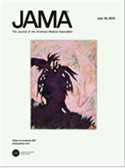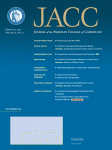JAMA:心血管疾病风险因子或致男性外周动脉疾病风险增加
2013-05-06 T.Shen 生物谷
2012年10月24日来自国际杂志JAMA的一项针对45000名男性的研究揭示了,超过20年接触和吸烟、高血压、高胆固醇以及II型糖尿病相关的风险因子的男性,其或者更容易引发外周动脉疾病(Peripheral artery disease,PAD)。 PAD是一种由于动脉狭窄堵塞引发的动脉粥样硬化综合症,其在美国影响着800至1000万人的正常生活,而且其可以增加患者患心脑血管疾病,甚至引发患者
2012年10月24日来自国际杂志JAMA的一项针对45000名男性的研究揭示了,超过20年接触和吸烟、高血压、高胆固醇以及II型糖尿病相关的风险因子的男性,其或者更容易引发外周动脉疾病(Peripheral artery disease,PAD)。
PAD是一种由于动脉狭窄堵塞引发的动脉粥样硬化综合症,其在美国影响着800至1000万人的正常生活,而且其可以增加患者患心脑血管疾病,甚至引发患者死亡。如今针对PAD的治疗并不奏效。
来自哈佛医学院等处的研究者开展了一项研究,来评估积累四项风险因子(吸烟、高血压、高胆固醇以及II型糖尿病)的男性患PAD的风险情况。研究者跟踪调查研究了44985名男性参与者。在接下来的24.2年里,有537例发生了PAD疾病。研究者发现,四种风险因子,都可以独立和PAD发病相关。不考虑时间因素,相比无风险因子的男性,所有携带一种风险因子的男性发生PAD的风险明显升高。然而附加一种风险因子,即两种就会使得PAD发病风险加倍。没有四种风险因子的男性,其发生PAD的风险会降低77%,而在96%的PAD患者病例中,至少都会有1种到4种风险因子。
PAD的发病风险更容易增加II型糖尿病和高胆固醇血症的持续时间,总的来说,四种风险因子:抽烟、高血压、高胆固醇以及II型糖尿病在临床上可以独立影响患者PAD的发病。
与心血管相关的拓展阅读:
- Europace:成功的导管消融可减少CHA2DS2-VASc评分≥1分房颤患者的心血管事件发生
- BMJ:低肪饮食或是保持苗条身材、降低心血管疾病风险的关键
- PLoS ONE:iPS细胞来源的心血管祖细胞治疗心血管疾病
- 新型降糖药是否具有更好的心血管保护作用?
- Diabetes Care:强化降糖心血管益处仍未显现 更多信息请点击:有关心血管更多资讯

Context Previous studies have examined the associations of individual clinical risk factors with risk of peripheral artery disease (PAD), but the combined effects of these risk factors are largely unknown. Objective To estimate the degree to which the 4 conventional cardiovascular risk factors of smoking, hypertension, hypercholesterolemia, and type 2 diabetes are associated with the risk of PAD among men. Design, Setting, and Participants Prospective study of 44 985 men in the United States without a history of cardiovascular disease at baseline in 1986; participants in the Health Professionals Follow-up Study were followed up for 25 years until January 2011. The presence of risk factors was updated biennially during follow-up. Main Outcome Measure Clinically significant PAD defined as limb amputation or revascularization, angiogram reporting vascular obstruction of 50% or greater, ankle-brachial index of less than 0.90, or physician-diagnosed PAD. Results During a median follow-up of 24.2 years (interquartile range, 20.8-24.7 years), there were 537 cases of incident PAD. Each risk factor was significantly and independently associated with a higher risk of PAD after adjustment for the other 3 risk factors and confounders. The age-adjusted incidence rates were 9 (95% CI, 6-14) cases/100 000 person-years (n = 19 incident cases) for 0 risk factors, 23 (95% CI, 18-28) cases/100 000 person-years (n = 99 incident cases) for 1 risk factor, 47 (95% CI, 39-56) cases/100 000 person-years (n = 176 incident cases) for 2 risk factors, 92 (95% CI, 76-111) cases/100 000 person-years (n = 180 incident cases) for 3 risk factors, and 186 (95% CI, 141-246) cases/100 000 person-years (n = 63 incident cases) for 4 risk factors. The multivariable-adjusted hazard ratio for each additional risk factor was 2.06 (95% CI, 1.88-2.26). Men without any of the 4 risk factors had a hazard ratio of PAD of 0.23 (95% CI, 0.14-0.36) compared with all other men in the cohort. In 96% of PAD cases (95% CI, 94%-98%), at least 1 of the 4 risk factors was present at the time of PAD diagnosis. The population-attributable risk associated with these 4 risk factors was 75% (95% CI, 64%-87%). The absolute incidence of PAD among men with all 4 risk factors was 3.5/1000 person-years. Conclusion Among men in this cohort, smoking, hypertension, hypercholesterolemia, and type 2 diabetes account for the majority of risk associated with development of clinically significant PAD.
作者:T.Shen
版权声明:
本网站所有注明“来源:梅斯医学”或“来源:MedSci原创”的文字、图片和音视频资料,版权均属于梅斯医学所有。非经授权,任何媒体、网站或个人不得转载,授权转载时须注明“来源:梅斯医学”。其它来源的文章系转载文章,本网所有转载文章系出于传递更多信息之目的,转载内容不代表本站立场。不希望被转载的媒体或个人可与我们联系,我们将立即进行删除处理。
在此留言







#疾病风险因子#
98
#疾病风险#
116
#血管疾病#
112
#风险因子#
105
#外周动脉#
115